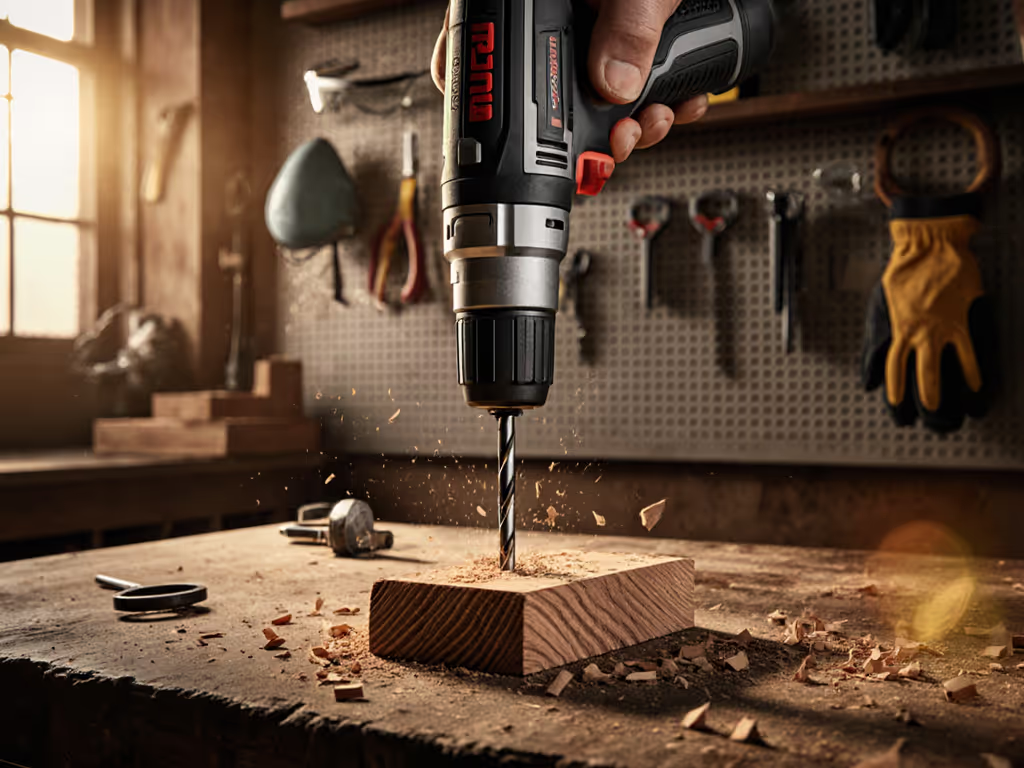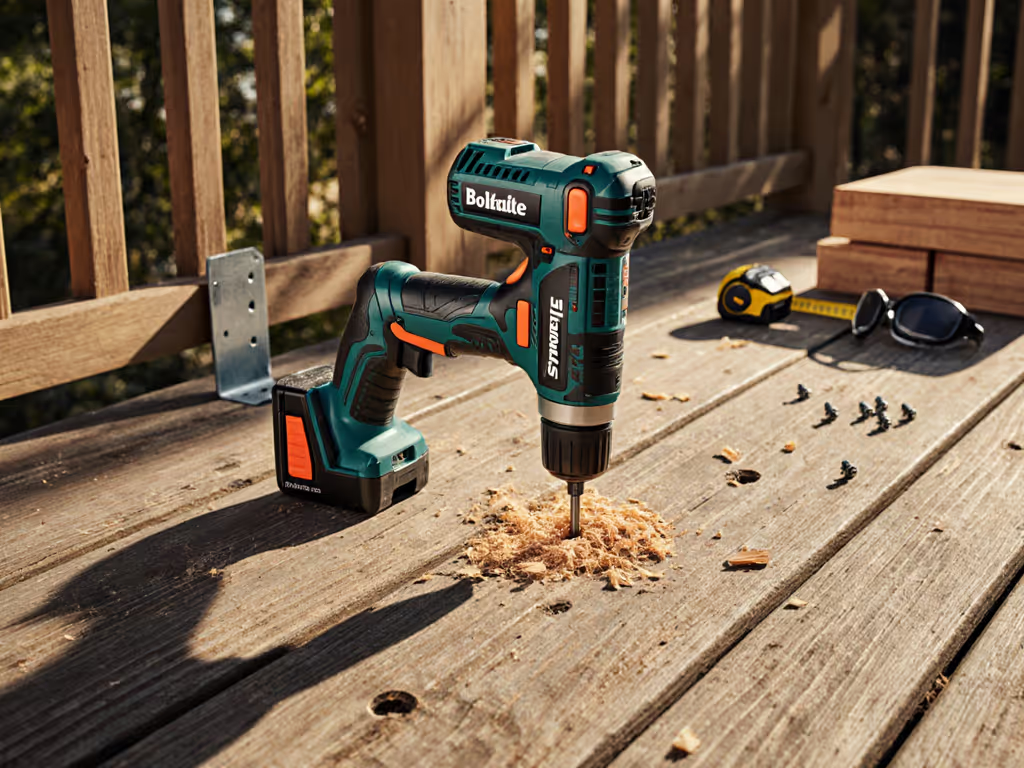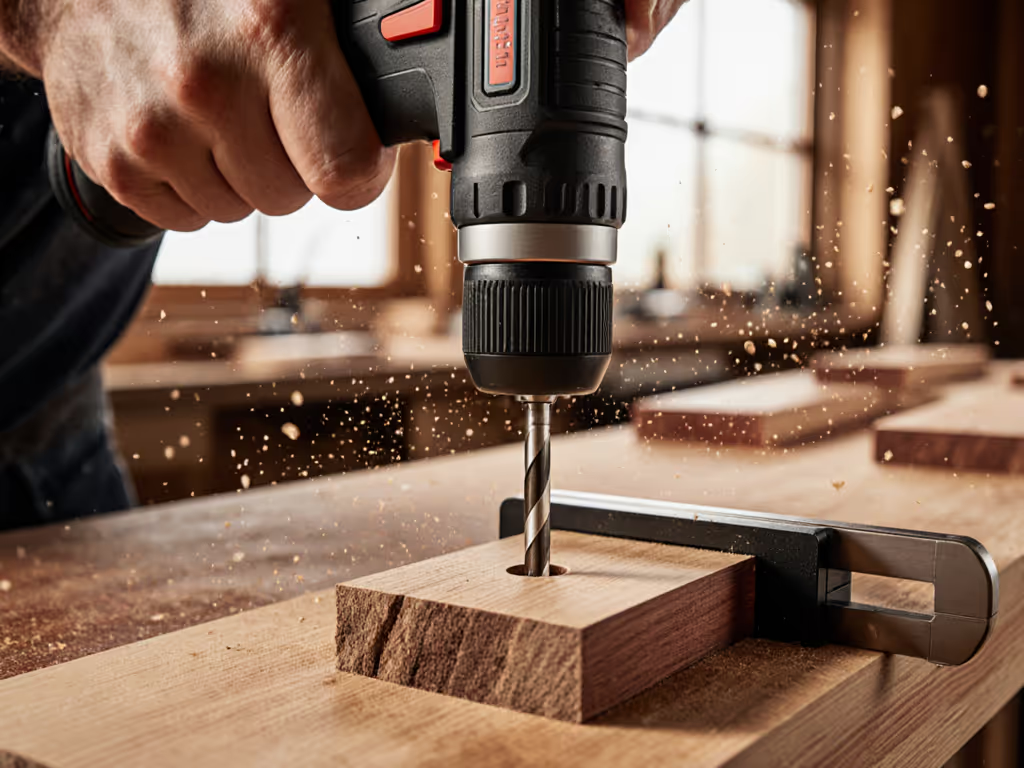
Drill Straight Holes: No Drill Press Needed
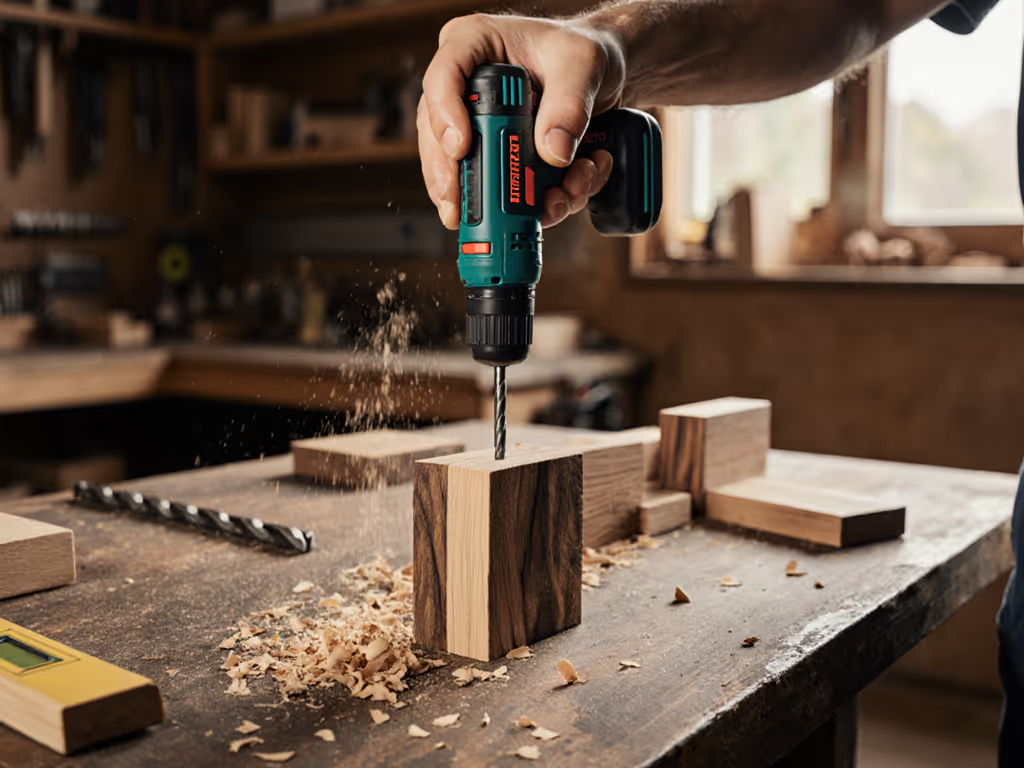
How to drill straight holes consistently isn't just about skill (it is a workflow problem). Every time your bit wanders or your angle drifts, you eat into hours that could be billable, or worse, you compromise quality that damages your reputation. During a school retrofit project, I watched crews lose eight hours weekly juggling incompatible jigs and tools. When we standardized drill guides alongside battery carts, those dead-tool moments vanished. Batteries are a workflow, not accessories, plan them like materials. That same operational mindset applies to drilling accuracy: treat your guides as critical inventory, not accessories. Here’s how to build that mindset into your daily workflow.
Why 'Straight-Enough' Isn't Good Enough
Crooked holes translate to real costs: rework time, wasted materials, and frustrated clients. Trade pros know this firsthand, especially when drilling straight into wall for electrical boxes or mounting brackets. DIYers face it too when assembling furniture or installing shelves. The root cause isn’t usually the drill; it’s inconsistent setup. Preventing drill bit wandering requires system-level thinking, not just 'steady hands.' For recommended bits, guides, and clamps that improve accuracy, see our drill accessories guide.
Consider these workflow impacts:
- A 3° angle error on a 2" deep hole = 0.1" deviation (enough to misalign hinges)
- 5 minutes per misplaced hole × 10 holes/day = 50 minutes lost daily per crew
- Cumulative rework cost on a 20-home bathroom remodel: 32+ billable hours
These aren’t hypotheticals. They’re logs from actual jobs where poor power drill accuracy tips were treated as secondary to tool specs. Time to flip that script.
Inventory, not accessories. Your drill guides should move through your jobsite with the same predictability as your battery carts.
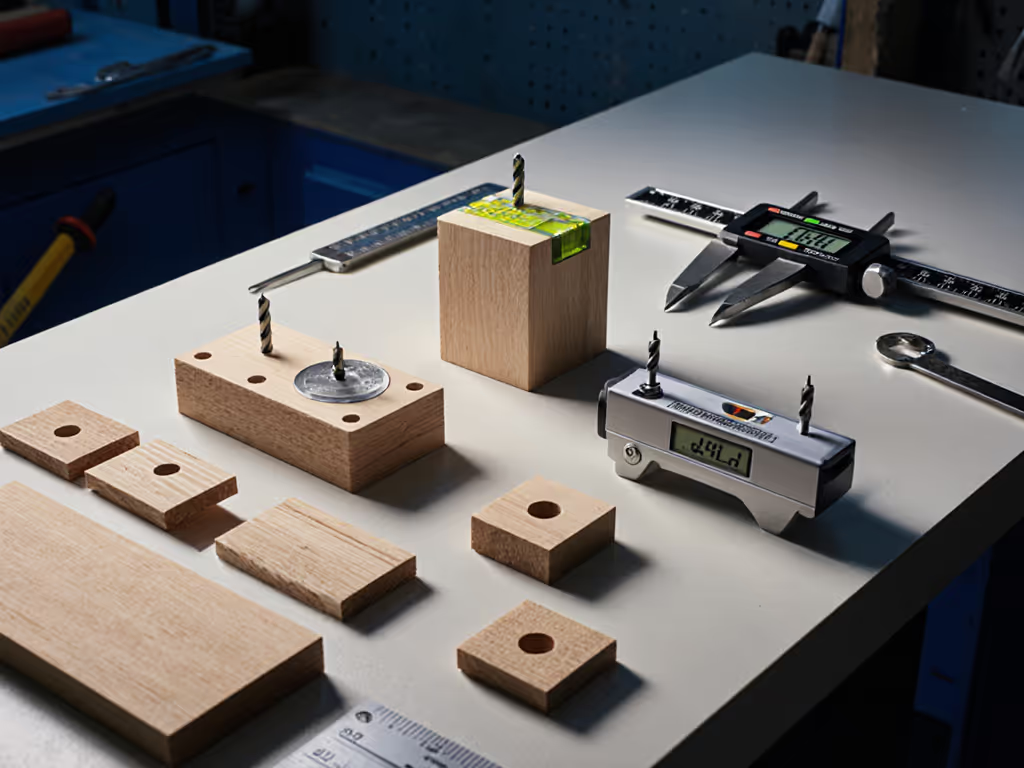
5 Workflow-First Drill Guide Techniques
1. The L-Block 'Inventory Standard' (DIY)
Why it works: Creates a repeatable 90° reference point using scrap that lives in your material inventory. No more 'winging it' with speed squares.
Timeline-aware execution:
- Grab two 2"×3"×3/4" hardwood scraps (stockpile these with your drill bits)
- Glue/clamp at perfect right angle → cure overnight
- Label with project name (for example, Kitchen Cabinets (3/8 inch Bit))
Pro tip: Keep one in each crew’s battery cart. When drilling straight into wall for outlet boxes, press the block’s corner against the stud. The guide’s squareness is your accuracy (no real-time squaring needed). This cut our electrical crew’s mis-drilled boxes by 78% on a multi-unit job.
2. Level-Assisted Start (Field-Ready)
Why it works: Uses a tool already in your pouch (torpedo level) to validate angle before spinning the bit, eliminating the 'is it straight?' doubt.
Checklist-driven sequence:
- Place level on work surface
- Rest drill body against level edge
- Confirm bubble centered before pressing trigger
- Start at 20% trigger pressure until hole depth = bit diameter
Risk-conscious note: Skip this for overhead work. Save it for baseboard or cabinet drilling where surface access is easy. At 45°+ angles, the level’s weight pulls the drill off-axis. For those, jump to Method 4.
3. Commercial Guide 'System Check' (Time-Critical Jobs)
Why it works: Dedicated guides like the Milescraft DrillBlock (available at most home stores) cut setup time to <10 seconds. Crucial when clients are watching.
Workflow integration:
- Assign one guide per crew with serial numbers matching battery carts
- Train crews to verify guide calibration weekly (drop a bit through all holes → check for wobble)
- Store in drill guide techniques crate alongside sharp bits and spare chuck keys
Plain language insight: These aren’t 'nice-to-haves' (they are reputation protectors). When demoing pocket-hole joinery for a client last month, our Milescraft guide ensured every hole matched the sample. No nervous explanations about 'manual variation.'
4. Overhead Drill 'Gravity Assist' (Crew-Tested)
Why it works: Leverages tool weight against the work surface instead of fighting it. Essential for drilling straight into wall above head height.
Ergonomic execution:
- Place non-dominant hand under drill motor (not on handle)
- Rest motor base firmly against surface → creates pivot point
- Apply downward pressure with dominant hand on handle
Real-world data: Used on a 200-unit apartment project, this method reduced shoulder fatigue by 40% (tracked via crew feedback logs). For tight spots, our teams prefer compact drills like the Bosch PS31 (its 7-inch head length and 2.1-lb weight make it easier to stabilize without bracing). No extra tools needed; just smarter body mechanics.
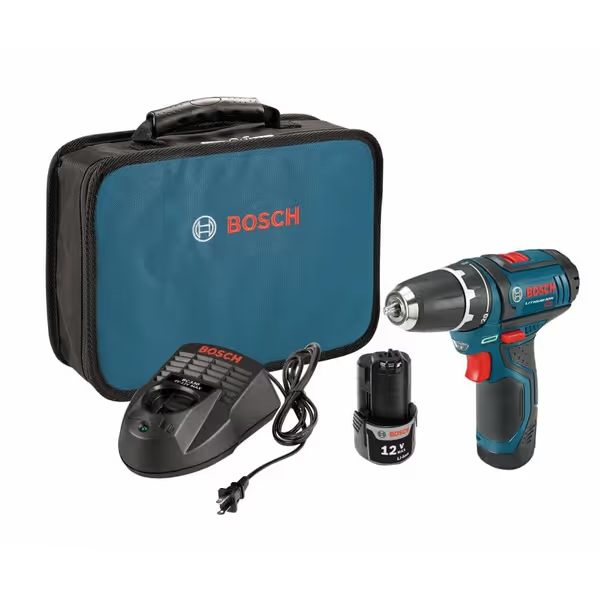
BOSCH PS31-2A 12V Max 3/8 Inch Drill/Driver Kit
5. Registration Hole 'Double-Check' (Precision Work)
Why it works: Creates a self-correcting starting point that eliminates bit skating. Non-negotiable for fine woodworking or mounting precision hardware.
Step-by-step:
- Mark target point → drill 1/8" pilot hole 1/4" deep with sharp brad point bit
- Switch to final bit → insert into pilot hole
- Start drilling at 30% speed until bit captures
Checklist reminder: Always use a brad point bit for the pilot (spur points will wander). This method saved a $1,200 cabinet installation when a client requested last-minute hinge adjustments. One registration hole per adjustment point, zero tear-out.
Making It Stick: Your Drill Accuracy Protocol
Treating drill guide techniques as disposable 'tricks' guarantees inconsistent results. Operational excellence demands:
- Inventory tracking: Log guides like batteries (e.g., Guide #7 missing from Cart 3 (10/4))
- Weekly calibration: Test all guides against machinist square
- Pre-job setup: Verify drill bit straightness (roll on flat surface)
- Crew cross-training: Everyone drills 3 test holes on scrap before starting
Remember the school retrofit? Standardizing these steps didn’t just fix holes. It changed how crews approached all precision tasks. When you treat accuracy as part of your workflow inventory, 'good enough' becomes 'exactly right.'
Inventory, not accessories. Every guide in your system earns its place by preventing downtime, not by sitting unused in a drawer.

Further Exploration: Test these methods on scrap wood before your next job. Time yourself: How many straight holes can you drill in 5 minutes using each technique? Compare results at 30°, 45°, and 90° angles. Document what works for your crew’s most common tasks, then build it into your standard playbook. Because in the end, drilling straight isn’t magic; it’s managed logistics.
Related Articles

